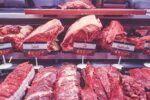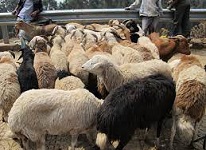By Melaku Kinfegabriel – Ethiopia is known for its rich biodiversity and diverse range of animal species. The country has a long history of exporting live animals, including both domesticated and wild animals.
Live animal exports from Ethiopia play a significant role in the country’s economy, contributing to foreign exchange earnings and providing employment opportunities. Ethiopia has been one of the largest exporters of live animals in Africa. The country has a vast livestock population, estimated to be around 60 million cattle, 30 million sheep, 30 million goats, and 1.2 million camels. This abundance of livestock resources provides Ethiopia with a competitive advantage in the global market for live animal exports.
Live Animal Export Regulations in Ethiopia
The export of live animals from Ethiopia is regulated by the Ethiopian Ministry of Agriculture. The ministry has established guidelines and procedures to ensure the welfare of animals during transportation and to prevent the spread of diseases. These regulations are in line with international standards set by organizations such as the World Organization for Animal Health (OIE) and the Convention on International Trade in Endangered Species of Wild Fauna and Flora (CITES).
Types of Live Animals Exported
Ethiopia exports a wide variety of live animals, including cattle, sheep, goats, camels, horses, poultry, and bees. Cattle are one of the most commonly exported animals, with breeds such as Boran, Arsi, and Horro being popular choices. Sheep and goats are also exported in large numbers, with breeds like Afar and Somali being favored for their adaptability to harsh environments.
In addition to domesticated animals, Ethiopia also exports certain species of wildlife. These include various types of antelopes, zebras, ostriches, crocodiles, and birds. However, it is important to note that the export of wildlife is strictly regulated to ensure conservation efforts are not compromised.
Export Process
The process of exporting live animals from Ethiopia involves several steps. First, exporters need to obtain permits from the Ministry of Agriculture. These permits specify the type and number of animals being exported and ensure compliance with all relevant regulations.
Once the necessary permits are obtained, the animals undergo health checks to ensure they are free from diseases. This is done by veterinary professionals who examine the animals and issue health certificates. The health certificates are required for the animals to be eligible for export.
Transportation of live animals is carried out by air or by road, depending on the destination. Air transportation is commonly used for long-distance exports, while road transportation is preferred for neighboring countries. During transportation, measures are taken to ensure the welfare of the animals, including providing adequate space, ventilation, and access to food and water.
Destination Markets
Ethiopia exports live animals to various countries around the world. The Middle East, particularly Saudi Arabia, Yemen, and the United Arab Emirates, is a major market for Ethiopian livestock. These countries have a high demand for meat and rely on imports to meet their domestic needs.
Other destination markets for Ethiopian live animals include Sudan, Djibouti, Somalia, and Kenya. These neighboring countries have a close geographical proximity to Ethiopia and share cultural and economic ties that facilitate trade.
Benefits and Challenges
The export of live animals from Ethiopia brings several benefits to the country’s economy. It generates foreign exchange earnings, contributes to rural livelihoods, and promotes economic growth. Additionally, it helps improve the quality of livestock in Ethiopia through exposure to international markets and competition.
However, there are also challenges associated with live animal exports. Ensuring the welfare of animals during transportation is a key concern. Long-distance journeys can be stressful for animals, and proper care must be taken to minimize their suffering. Additionally, there is a risk of disease transmission during transportation, which can have negative impacts on both animal and human health.
Export Revenue
Ethiopia has experienced fluctuations over the years due to various factors such as changes in global demand, market conditions, and domestic policies. However, it is important to note that accurate and up-to-date data on Ethiopia’s live animal export revenue is not readily available.
Based on historical trends and estimates from various sources, it can be inferred that Ethiopia’s export revenue from live animals has been substantial. For instance, in 2018/2019 fiscal year, Ethiopia earned approximately $360 million from live animal exports. This figure demonstrates the significant contribution of the sector to the country’s overall export earnings.
The Ethiopian government has recognized the importance of the livestock sector and has implemented policies to promote and support its growth. Initiatives such as improving animal health services, enhancing market access through infrastructure development, and strengthening the capacity of livestock producers have been undertaken to boost the export potential of live animals.
Meat Production and Export Revenue
The total volume of meat production in the country reached 1.9 million metric tons in 2019/2020, according to the Central Statistical Agency of Ethiopia. Cattle are the primary source of meat production in Ethiopia, accounting for a significant portion of the total volume.
The poultry sector has been growing rapidly in recent years, driven by increased urbanization and changing dietary preferences. Poultry meat production has seen substantial growth, with Ethiopia producing around 70 thousand metric tons of poultry meat annually.
Meat Export Revenue
The export income from meat products has shown positive growth over the years. According to data from the Ethiopian Meat and Dairy Industry Development Institute (EMDIDI), Ethiopia earned approximately $93 million from meat exports in the fiscal year 2019/2020. This represents a significant increase compared to previous years, highlighting the growing demand for Ethiopian meat in international markets.
The Drivers of Meat Production and Export of Ethiopia
Several factors contribute to the growth of meat production and export in Ethiopia. These include:
1. Abundant Livestock Resources: Ethiopia has vast grazing lands and favorable climatic conditions, which support the rearing of livestock. The availability of natural resources plays a crucial role in sustaining the livestock population and meeting the demand for meat production.
2. Government Support: The Ethiopian government has implemented various policies and initiatives to promote the livestock sector, including providing financial support, improving animal health services, and investing in infrastructure development. These efforts aim to enhance productivity, quality, and market access for meat products.
3. Increasing Demand: Both domestic and international demand for meat products has been on the rise. In Ethiopia, population growth, urbanization, and changing dietary patterns have led to increased meat consumption. Internationally, there is a growing demand for high-quality meat products, particularly in Middle Eastern countries where Ethiopian meat is highly regarded.
4. Quality Assurance: To meet international standards and ensure food safety, Ethiopia has been working on improving the quality of its meat products. The government has established regulatory bodies such as EMDIDI to oversee quality control measures and provide certification for export-oriented meat processing facilities.
Market Entry Requirements
To enter Ethiopia’s meat production and export market, there are several requirements that need to be fulfilled. These requirements encompass various aspects such as legal regulations, infrastructure, quality standards, and market access. It is important to note that the specific requirements may vary depending on the type of meat product and the destination country for exports. Here is a comprehensive overview of the key requirements:
1. Legal and Regulatory Requirements:
– Business Registration: To engage in meat production and export activities in Ethiopia, it is necessary to register a business entity with the appropriate government authorities. This typically involves obtaining a trade license and registering with the Ethiopian Investment Commission (EIC) or relevant regional investment bureaus.
– Compliance with Food Safety Standards: Meat producers and exporters must adhere to food safety regulations set by the Ethiopian Food and Drug Authority (EFDA). This includes obtaining necessary permits, ensuring proper handling, storage, and transportation of meat products, and implementing hygiene practices throughout the production process.
– Veterinary Certification: Exporters must comply with veterinary certification requirements to ensure that the meat products meet international health standards. This involves obtaining veterinary health certificates from the Ministry of Agriculture or other authorized bodies.
– Export Licensing: Prior to exporting meat products, exporters need to obtain an export license from the Ministry of Trade and Industry or relevant regional trade bureaus. The license ensures compliance with export regulations and allows for market access.

2. Infrastructure and Production Requirements
– Slaughterhouses and Processing Facilities: Establishing or partnering with existing slaughterhouses and processing facilities that meet international standards is crucial for meat production and export. These facilities should have adequate infrastructure, equipment, and trained personnel to handle slaughtering, processing, packaging, and storage operations.
– Cold Chain Facilities: Maintaining an uninterrupted cold chain is essential for preserving the quality and safety of meat products during transportation. Exporters need to invest in refrigerated trucks, cold storage facilities, and other temperature-controlled logistics infrastructure to ensure the products remain fresh and meet market requirements.
– Traceability Systems: Implementing traceability systems enables the tracking and monitoring of meat products throughout the supply chain. This includes recording information about the origin, production methods, veterinary treatments, and transportation details. Traceability systems enhance transparency, quality control, and compliance with international standards.
3. Quality Standards and Certifications
– Halal Certification: Ethiopia has a significant Muslim population, and obtaining halal certification is crucial for exporting meat products to Muslim-majority countries or markets with high demand for halal products. Certification can be obtained from recognized Islamic organizations or certifying bodies.
– Quality Assurance Systems: Implementing quality assurance systems such as Hazard Analysis Critical Control Point (HACCP) or ISO 22000 is essential to ensure food safety and meet international quality standards. These systems help identify and control potential hazards throughout the production process.
– Product Labeling and Packaging: Meat products intended for export must comply with labeling requirements of the destination country. This includes providing accurate information about ingredients, nutritional values, allergens, and proper packaging that ensures product integrity during transportation.
In general, Ethiopia’s meat production volume has been steadily increasing over the years, driven by abundant livestock resources and government support. The country’s export income from meat exports has also shown positive growth, contributing to its overall economic development. With increasing demand both domestically and internationally, Ethiopia’s meat industry is poised for further expansion in the coming years.
In conclusion, Ethiopia’s export revenue from live animal and meat exports has been a vital source of income for the country. The sector has provided employment opportunities, improved livelihoods, and contributed to foreign exchange earnings. In terms of live animals, while accurate data on export revenue is limited, it is evident that Ethiopia’s livestock resources and strategic geographical location have positioned it as a key player in the global meat and live animal tradelive animal trade.
